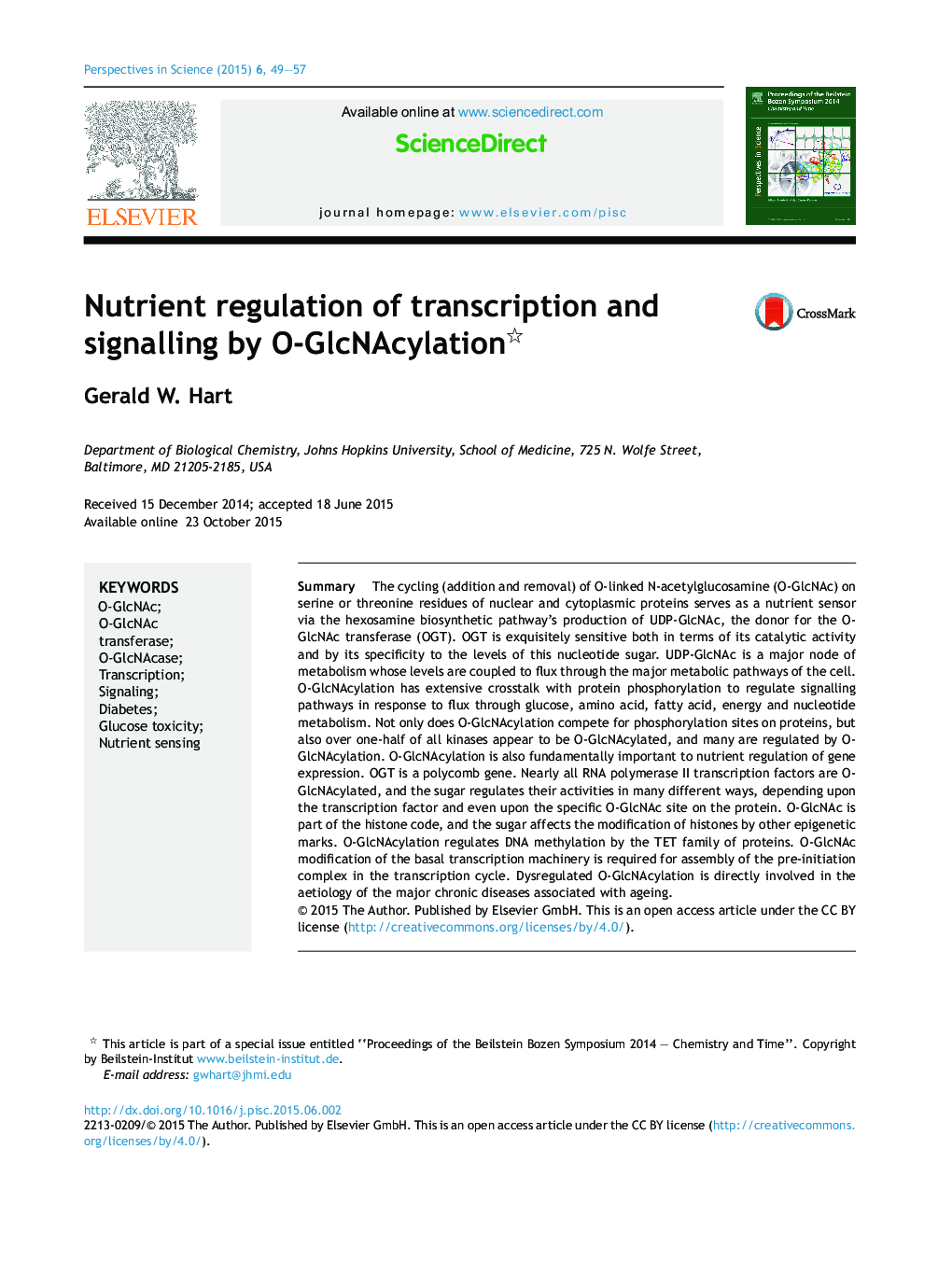| Article ID | Journal | Published Year | Pages | File Type |
|---|---|---|---|---|
| 2061637 | Perspectives in Science | 2015 | 9 Pages |
SummaryThe cycling (addition and removal) of O-linked N-acetylglucosamine (O-GlcNAc) on serine or threonine residues of nuclear and cytoplasmic proteins serves as a nutrient sensor via the hexosamine biosynthetic pathway's production of UDP-GlcNAc, the donor for the O-GlcNAc transferase (OGT). OGT is exquisitely sensitive both in terms of its catalytic activity and by its specificity to the levels of this nucleotide sugar. UDP-GlcNAc is a major node of metabolism whose levels are coupled to flux through the major metabolic pathways of the cell. O-GlcNAcylation has extensive crosstalk with protein phosphorylation to regulate signalling pathways in response to flux through glucose, amino acid, fatty acid, energy and nucleotide metabolism. Not only does O-GlcNAcylation compete for phosphorylation sites on proteins, but also over one-half of all kinases appear to be O-GlcNAcylated, and many are regulated by O-GlcNAcylation. O-GlcNAcylation is also fundamentally important to nutrient regulation of gene expression. OGT is a polycomb gene. Nearly all RNA polymerase II transcription factors are O-GlcNAcylated, and the sugar regulates their activities in many different ways, depending upon the transcription factor and even upon the specific O-GlcNAc site on the protein. O-GlcNAc is part of the histone code, and the sugar affects the modification of histones by other epigenetic marks. O-GlcNAcylation regulates DNA methylation by the TET family of proteins. O-GlcNAc modification of the basal transcription machinery is required for assembly of the pre-initiation complex in the transcription cycle. Dysregulated O-GlcNAcylation is directly involved in the aetiology of the major chronic diseases associated with ageing.
